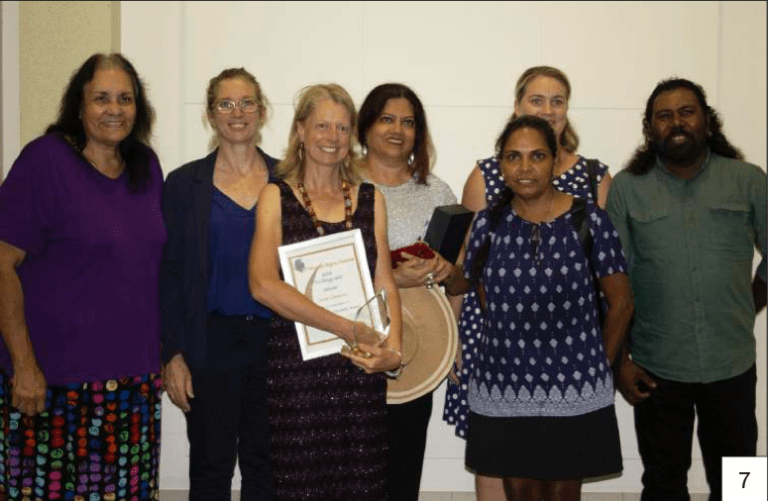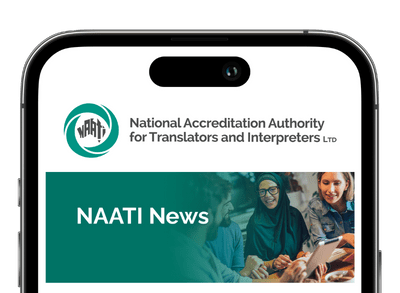Enhancing Specialised Legal Vocabulary Training for Aboriginal Interpreters
The issues
Aboriginal interpreters working in NT courts — a high pressure, high stakes environment — face multiple language-based (as well as intercultural, intracultural and emotional) challenges. Court interpreters, expected to accurately convey meaning from source to target language, must understand complex legal concepts and processes — often incommensurable between English and First Languages, and between Australian and local Aboriginal Englishes (LAEs) — and the related specialised vocabulary.
Language ignorance, polysemy, ‘false friends’ and negative transfer (described below) are just some of the many challenges they routinely encounter in their work, and their high ‘learning burden’ further complicates matters.
• Institutionalised language ignorance hit an all-time low in NT in 1999, when the then chief minister, Denis Burke, likened ‘providing Aborigines with interpreters’ to ‘giving a wheelchair to someone who should be walking’. Over the intervening two decades attitudes have changed, and there is generally wider understanding that someone whose first language is not English may need the assistance of an interpreter in court. However, it is often wrongly assumed that if an Aboriginal Australian speaks some English, they have the proficiency that is necessary to participate in police or lawyer interviews, or to answer questions in court.
• Polysemy is the existence of multiple meanings for a word or phrase. The word ‘guilty’, for example, has two meanings in Australian English: responsible for an offence (‘You are guilty’ — a key legal concept), and also having a sense of guilt (‘A guilty conscience’), but no direct translation in the First Languages of Central Australia. My colleague David Moore cites a client at the Alcohol Assessment Service who, when asked ‘Do you sometimes feel guilty?’ answered ‘I was guilty in the Watch House’. The client was clearly referring to having been pronounced guilty in a past court case, whereas what the social worker wanted to know was whether he ever felt guilty for neglecting his family.
• ‘False friends’ — words that sound the same in different languages or dialects, and usually have a common origin, but have different meanings —can lead to serious miscommunication in a legal context, if a listener incorrectly assumes the word is being used to mean what it does in their own language or dialect. One example Moore gives is ‘force’. A defendant may say they acted — for example, committed a crime — because someone ‘forced’ them to do so, when there’s no obvious element of coercion. What they actually mean is that someone with cultural influence — such as a senior relative — encouraged them to commit the crime.
• In Australia, English accent, grammar and meaning have been Aboriginalised to establish many LAE dialects. Negative transfer — errors created by interference from a learner’s first language — is frequently caused by the lexical and phonological similarities of LAEs to English. Even a highly experienced interpreter may not be able to explain why a misunderstanding has occurred, because their understanding of a particular word is that of an LAE rather than of Australian English.
• The ‘learning burden’ of a word or term — the amount of effort required to learn it — is heavier when the source language is not related to the target language. English and Aboriginal languages come from vastly different language families and cultural bases, and have completely different lexical, phonological and grammatical structures. This makes interpreting English legal terms into Aboriginal languages a much more complex exercise than transferring them into other European languages with more similar vocabularies and conceptual backgrounds, so Aboriginal interpreters learning specialised legal vocabulary shoulder a heavy learning burden.

Jodie (third from left) with Top End friends at the Fitzgerald Awards last year
Finding Solutions
In 2012 the Darwin Supreme Court held a ‘Language and the Law’ conference which kick-started dialogue and collective learning between legal and T&I professionals. Teaching and learning resources subsequently developed — including The Plain English Legal Dictionary, Indigenous protocols for lawyers, First Language reverse role-plays and First Language police cautions — have improved awareness of language differences and difficulties such as polysemy and false friends, and have repositioned the interpreter as an essential player in a fair trial. As a result, experienced First Language interpreters have reported feeling more confident and valued, and better supported in carrying out their role in court.
As a trainer I can further this progress by tailoring my role in interpreters’ preparation for court, i.e. vocabulary instruction, to specifically combat the issues identified. I have drafted a series of group learning activities which aim to build skills and confidence in understanding and shuttling between English speech communities while increasing legal vocabulary.
Initial lessons focus on learners as multi- dialectal in their English language use. I will support their understanding of the differences between Australian and Aboriginal English meanings and cultural factors, building awareness of false friends and polysemy, and together we will explore strategies for the most appropriate interpretation to fit the context.
I am designing activities that will enable interpreters to get to know each legal word deeply: its form (written, spoken and word parts), meaning (form and meaning, concept, referents and associations) and use (grammatical functions, collocations and constraints). Learners will develop a rich repertoire of formulaic expressions and rule- based competence, and implicit and explicit knowledge of legal English; and they will be assessed on free as well as controlled production.
I use The Plain English Legal Dictionary as a focal point for exploring legal terms and usage, with interpreters writing Plain English definitions of vocabulary items into their own legal glossaries. Then, working in L1 groups or with their L1 dictionaries, they interpret (and/ or translate) the new word/term into L1, then interpret (and translate) these L1 definitions back into English to ensure meaning has been preserved. Both English and L1 definitions are recorded on audio devices, and accuracy, impartiality, fluency and naturalness are assessed by experienced L1 court interpreters.
Interpreters are now understood to play a crucial role in bridging the huge communication gap between the players in the legal system. Judicial officers, legal professionals, interpreters and their trainers, therefore, have a joint responsibility to continue our collective learning journey. It takes years to develop competence and confidence in court interpreting, and my part in this process is to offer effective vocabulary instruction, both initial and ongoing.
Before joining the Aboriginal Interpreter Service, Jodie Clarkson worked at Alice Springs Desert Park for 17 years, gaining experience across a wide range of disciplines ranging from zookeeping and guiding to management and developing and delivering bilingual education programs. She holds a bachelor’s degree in applied science (parks, recreation and heritage) and a master’s in education. Jodie is passionate about language rights and bilingual education, and in 2018 she was awarded the Fitzgerald Human Rights Award for Supporting Diverse NT Communities.
